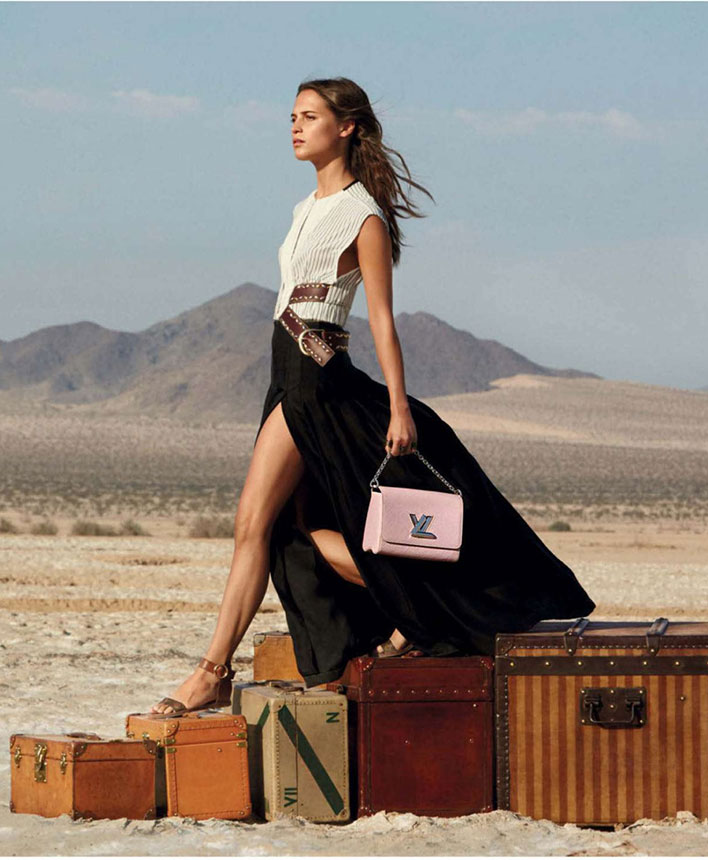|
From its iconic monogrammed It bags to its opinion-splitting ready-to-wear collections, for decades Louis Vuitton has reigned supreme as one of the world’s most sought after fashion brands. Inspiring legions of devoted fans, commanding investment-level prices at auction and gaining a veritable horde of celebrity ambassadors, this is how Louis Vuitton reached stratospheric heights. 1837A 16-year-old Louis Vuitton arrives in Paris to become an apprentice to trunk maker Monsieur Maréchal. A valued trade in a time of horse-drawn carriages and early-era train travel, Vuitton quickly became a master of his trade, learning to design and craft custom boxes and trunks and becoming a key part of the Monsieur Maréchal team for the next 17 years. 1854Now an expert in his field, Vuitton opens his first workshop at 4 Rue Neuve-des-Capucines near the Place Vendome 1858Louis Vuitton introduces his new flat-top Trianon canvas trunk. Lightweight and airtight, unlike its round-top contemporaries, the Trianon trunks could be stacked for long voyages and soon found many imitators. 1859Early success sees Vuitton expand with a new site in Asnières, a suburb a few miles outside of Paris, for its 20 employees. Providing both a home for his family and a new headquarters for the business, the site remains a symbol of the brand’s heritage and success to this day, with 170 craftsmen currently working on site to create special orders for important clients.
1930The Keepall and Speedy bags make their debut becoming instant and enduring hits. Marking the brand’s expansion from travel into bags for personal use, they are followed in 1932 by the Noé (a bag originally design to carry champagne vintners). All three remain some of the brand’s most popular styles to this day. 1936Georges Vuitton dies and is succeeded by his son Gaston-Louis Vuitton.
1997American designer Marc Jacobs is appointed as artistic director and immediately sets about creating the brand’s first ready-to-wear fashion line for men and women, which was presented in March 1998. 2001Marc Jacobs enlists artist Stephen Sprouse to create a line of limited edition bags customised with Sprouse’s signature graffiti, with select pieces available only to Vuitton’s VIP clients. This year also saw Jacobs create the band’s first piece of jewellery - a charm bracelet - and begin a campaign to enlist some of the world’s biggest stars, including Angelina Jolie, Sean Connery, Scarlett Johnson and Jennifer Lopez, as ambassadors. 2002Building on the success of its Sprouse collaboration, Takashi Murakami is called on to create a new line of Monogram Multicolore bags and accessories. The range reimagines the classic LV monogram in 33 different colours on black and white backgrounds and draws a new, younger clientele into the Louis Vuitton world. 2007The latest in Louis Vuitton’s long line of It bags - the Neverfull - is introduced. So named for its ability to carry up to 200lbs, this simple tote has endured as one of the brand’s signature designs. 2011Kim Jones is appointed as lead designer of the brand’s men’s ready-to-wear, reporting in to Marc Jacobs. 2013Nicholas Ghesquière is hired to replace Marc Jacobs as artistic director of women’s collections, showing his first collection during Paris Fashion Week in March 2014. Joining from the more experimental Balenciaga, Ghesquière sets about modernising and pushing the boundaries of the established Louis Vuitton aesthetic. Darren Spaziani is also appointed to lead the expansion of the brand’s accessory collections. 2018Virgil Abloh is confirmed as artistic director of menswear, replacing Kim Jones and becoming the label’s first African-American artistic director. Enlisted to instil some of the streetwear spirit of his own brand, Off-White, his first collection is shown at the Palais-Royal during Paris Men’s Fashion Week. 2019Louis Vuitton is named by Forbes as the world’s most valuable luxury brand, worth $39.3 billion. It is estimated to turn profits north of 30%. Comments are closed.
|
Categories |
Search by typing & pressing enter








